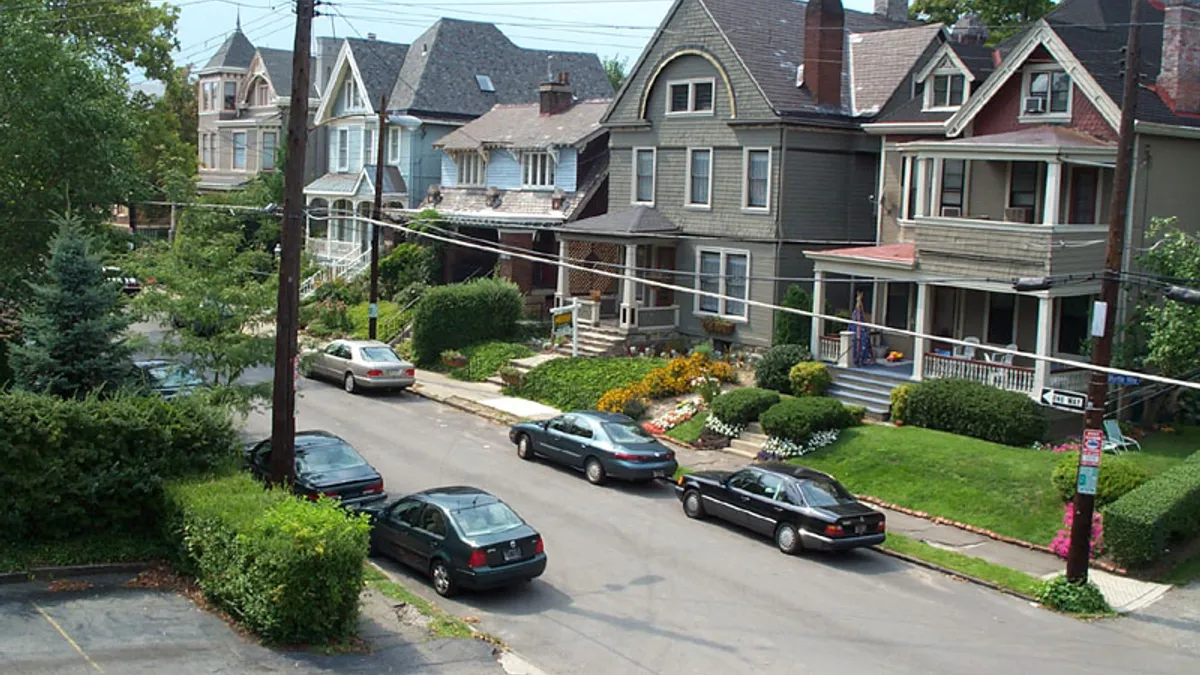Dive Brief:
- The homes of wealthy Americans are responsible for about 25% more greenhouse gas (GHG) emissions than low-income households, according to a new study released Monday by University of Michigan researchers.
- Researchers used CoreLogic, a database of tax assessor records, to create the first national look at the carbon footprint of U.S. housing stock using data from about 93 million (78%) of households. The authors calculated a home's "greenhouse gas intensity," or emissions per square meter of floor space, taking into account the electricity mix for the local utility.
- The study found the GHG impact of U.S. homes is lowest in Western states and highest in Central states, and the carbon footprint of wealthy neighborhoods can be as much as 15 times higher than lower-income areas. Meeting the Paris Agreement target of an 80% emissions reduction by 2050 will require energy efficient retrofits for homes and a transition to smaller homes and denser developments to reduce the carbon footprint of the housing sector, the researchers found.
Dive Insight:
Heating and powering homes accounts for about 20% of the nation’s GHG emissions, the study found. That makes housing policy an important piece of the climate change fight, study co-author Benjamin Goldstein told Smart Cities Dive, especially with the U.S. projected to add between 62 million and 105 million new homes by 2050.
"If we keep building the way we have been, we will be locked in with these high carbon emissions," said Goldstein, a postdoctoral research fellow at the School for Environment and Sustainability. "Decarbonization will not be enough."
The results showed that income was correlated with both energy use and emissions, with larger, more expensive homes generally having a larger carbon footprint. In two case studies in the Boston and Los Angeles metro areas, the researchers found that sprawling suburbs with large detached homes had significantly higher building footprint ratios, despite the energy mix supplying them.
That does not necessarily mean that the only way to achieve the country’s climate goals is to retrofit suburbs into dense, urban-style housing, Goldstein said. He suggested policymakers should look at "smart urban in-fill" that can make cities denser with smaller homes, especially through an affordable housing plan. Promoting efficiency strategies like weatherization and clean heating sources would also reduce homes’ impact.
Already, some cities have used housing policy as a climate tool. Minneapolis approved a plan in 2018 to zone more of the city for multi-family housing and permit taller buildings, and a sustainability plan from Los Angeles County identified smart development as a driver for efficiency.











